Accounting Equation Assets = Liabilities + Equity

This number is the sum of total earnings that were not paid to shareholders as dividends. Using Apple’s 2023 earnings report, we can find all the information we need for the accounting equation. Think of liabilities as obligations — the company has an obligation to make payments on loans or mortgages or they risk damage to their credit and business. Because of the two-fold effect of business transactions, the equation always stays in balance. The process of recording these transactions will continue across the period. In reality, a business may have thousands, with each one affecting at least two accounts.
- The accounting equation states that the amount of assets must be equal to liabilities plus shareholder or owner equity.
- Like any mathematical equation, the accounting equation can be rearranged and expressed in terms of liabilities or owner’s equity instead of assets.
- Receivables arise when a company provides a service or sells a product to someone on credit.
- The balance sheet is the linchpin of the structural integrity of the three key financial statements.
- Want to learn more about recording transactions and doing accounting for your small business?
Owner’s Equity
It’s the compass that guides all accountants and bookkeepers, even if transactions get complex. For small businesses, knowing how the accounting equation works can help you better understand financial statements, along with how bookkeepers do their jobs. Valid financial transactions always result in a balanced accounting equation which is the fundamental characteristic of double entry accounting (i.e., every debit has a corresponding credit).
Revenues & Expenses in the Accounting Equation
The accounting engineering records the new asset and the use of cash. Want to learn more about recording transactions and doing accounting for your small accounting formula business? A company’s “uses” of capital (i.e. the purchase of its assets) should be equivalent to its “sources” of capital (i.e. debt, equity).
Assets, Liabilities, And Equity
- This number is the sum of total earnings that were not paid to shareholders as dividends.
- Since the accounting equation depicts a mathematical equality, it also goes that all debits must always equal all credits.
- Non-current assets or liabilities are those that cannot be converted easily into cash, typically within a year, that is.
- The difference between the $400 income and $250 cost of sales represents a profit of $150.
- Get instant access to video lessons taught by experienced investment bankers.
- To further illustrate the analysis of transactions and their effects on the basic accounting equation, we will analyze the activities of Metro Courier, Inc., a fictitious corporation.
If you want to know more about accounting errors and how to spot them, we recommend reading Common Accounting Errors – A Practical Guide With Examples. From setting up your organization to inviting your colleagues and accountant, you can achieve all this with Deskera Books. You can witness the easy implementation of the tool and try it out to get a renewed experience while handling your accounting system. Deskera Books is an online accounting software that enables you to generate e-Invoices for Compliance. It lets you easily create e-invoices by clicking on the Generate e-Invoice button. Assets represent the ability your business has to provide goods and services.
Everything You Need To Master Financial Statement Modeling
The income statement will explain part of the change in the owner’s or stockholders’ equity during the time interval between two balance sheets. The accounting equation is the most fundamental concept in double-entry bookkeeping. It’s based on the principal that everything a company owns (assets) is owed to either creditors (liabilities) or owners (owner’s equity). This equation also depicts the relationships between accounts and how one transaction affects each other. All assets owned by a business are acquired with the funds supplied either by creditors or by owner(s).
Liabilities
For example, if the total liabilities of a business are $50K and the owner’s equity is $30K, then the total assets must equal $80K ($50K + $30K). The accounting equation states that a company’s total assets are equal to the sum of its liabilities and its shareholders’ equity. With the accounting equation expanded, financial analysts and accountants can better understand how a company structures its equity.

He is the sole author of all the materials on AccountingCoach.com. For the past 52 years, Harold Averkamp (CPA, MBA) has worked as an accounting supervisor, manager, consultant, university instructor, and innovator in teaching accounting online. Unearned revenue from the money you have yet to receive for services or products that https://www.bookstime.com/tax-rates/florida you have not yet delivered is considered a liability. The global adherence to the double-entry accounting system makes the account-keeping and -tallying processes more standardized and foolproof. Metro issued a check to Rent Commerce, Inc. for $1,800 to pay for office rent in advance for the months of February and March.
Sample Business Transactions
The accounting equation relies on a double-entry accounting system. For example, if a company buys a $1,000 piece of equipment on credit, that $1,000 is an increase in liabilities (the company must pay it back) but also an increase in assets. The accounting equation is the foundation of a bookkeeping system.
Components of the Basic Accounting Equation
- As we previously mentioned, the accounting equation is the same for all businesses.
- Double-entry bookkeeping is a fundamental accounting concept that requires every financial transaction to affect at least two different accounts.
- The accounting equation’s left side represents everything a business has (assets), and the right side shows what a business owes to creditors and owners (liabilities and equity).
- The balance sheet is also referred to as the Statement of Financial Position.
- Metro Corporation earned a total of $10,000 in service revenue from clients who will pay in 30 days.
- It can be defined as the total number of dollars that a company would have left if it liquidated all of its assets and paid off all of its liabilities.
- As we’ve learned previously, the accounting equation is a mathematical expression that shows the relationship among the different elements of accounting, i.e. assets, liabilities, and capital (or « equity »).




